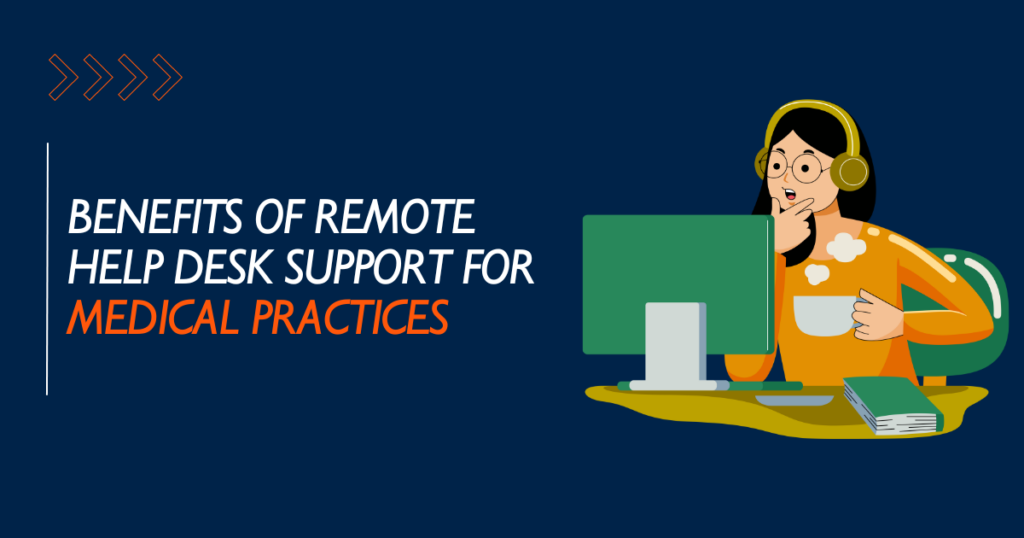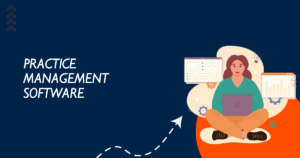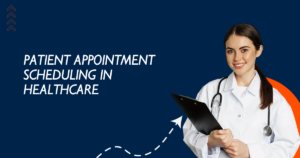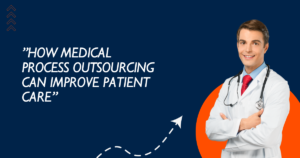As the world advances in every field of science and technology, it has become very convenient for people to call from their homes directly and ask their queries. This is precisely the role of the remote help desk. After the COVID-19 pandemic, remote help desk support for medical practices has become very common and helpful.
What Is A Remote Help Desk?
Remote help desks in medical services play a vital role in the case of medical Emergencies. The remote help desk can be described as a way to contact your doctor online through calls, messages, and video calls for queries about a patient’s condition And treatment. Through different types of remote help desks in medical practices, patients can get treatment via online contact with doctors from anywhere worldwide without physically meeting.
Significance Of a Remote Help Desk In Medical Practices
- The remote help desk is a quick way to get answers and is convenient for patients. It is helpful in emergencies for customers because visiting a Doctor is not easy, as the patient has to go through extreme traffic and rushy areas to reach the hospital.
- Regular hospital visits can be very uncomfortable for elderly patients and are highly costly, too.
- People living in rural areas travel a long distance for hospital visits, which is not convenient or suitable for them, so the help desk for medical practices and businesses is beneficial for people facing such problems.
- People who suffer from weak immune systems get attacked by viruses like COVID-19 and eye flu, sneezing, and coughing, so physical meetings and visiting Medical service areas are not safe for them, such people can easily find their queries from wherever they are with just one call.
- Medical desk help is a modern approach for medical practices and business, and it is helpful for both patients and doctors. This system saves a lot of time and is designed in such a way that it is more accessible, faster, and personal
- The healthcare service desk grants its customers 24/7 availability and reliance.
Different Types Of Remote Help Desk
There are different kinds of remote help desks in healthcare services;
Telemedicine
It is a popular method to help patients residing in rural and neglected areas. It includes two-way communication between the healthcare assistant and the patient, using electronic audio and visual means.
Telemedicine is convenient if there are no emergencies regarding the patient’s health. The doctor would prescribe the medicine via phone, as some conditions do not require the doctor to see the patient.
Store and Forward (asynchronous telemedicine)
The subcategory of telemedicine, Stored and forward, includes the patient’s pictures, documents, and information shared with doctors for further assessment. No physical examination is required. Doctors of dermatology and radiology can check their Patients’ condition by looking at the shared pictures and documents.
Some examples of store and forward include:
- Messaging between patient and doctor
- Symptoms survey questionnaire
- X-ray or MRI sharing
- Patient report sharing
- Wound imaging
Virtual Consultation (synchronous telemedicine)
Virtual consultation is the most popular aspect of telemedicine. It allows patients to have consultations with doctors virtually from anywhere in the world. Remote consultations are the most convenient way to get healthcare assistance.
Examples of synchronous telemedicine are as follows;
- Video call evaluation
- Real-time behavior observation
- Live physical therapy sessions
- Phone call about patient’s symptoms
Remote Patient Monitoring (RPM)
This kind of telehealth allows doctors to monitor patients remotely and doctors can check patients’ vital signs and health information by using devices and sensors. Patients who suffer from diabetes, heart problems, and hypertension are checked through such devices. The data collected through such devices are automatically transferred to the providers for care management. Experts use devices such as weight scales, blood pressure monitors, pulse oximeters, and blood glucose meters to get information about patients’ conditions.
Telehealth
Aside from treating the patients, telehealth aims to prevent the disease. It offers a full range of remote medical treatment services. It is another way of contacting your healthcare provider online, within your comfort zone.
Mobile Health (Mhealth)
We carry mobile phones everywhere and use them for other essential tasks, but now we can also use them for healthcare services. It promotes healthcare app development, such as giving notification reminders for medicine, monitoring your heartbeat rate, and fitness tracking. Many health apps are available for mobile download, such as:
- Text message reminder: The patient will be notified about his appointment with The doctor and get a reminder to take his medicine on time.
- Wearable devices: The patient can get medical wearable devices, such as Smartwatches and fitness trackers, which help the patient check their physical Activity and heartbeat, and much more
Types Of Remote Medical Support Devices To Gather Health Data
Many different types of devices are used for gathering health data. Some devices, such as weight scale devices, are formed in a way that only plays a specific role. Let’s discuss some of the important and central devices that are commonly used by healthcare providers in everyday routine:
● Glucose monitors: They provide automatic and continuous monitoring of blood sugar levels in diabetic patients
● Heart rate monitors: This device continuously shows the patient his heartbeat rate and monitors the heartbeat.
● Wearable devices: Many different kinds of wristbands and smart watches automatically alarm the patient and doctor if the patient’s condition gets worse.
● Ingestible sensors: These sensors provide deep insight into a patient’s internal system, which is very helpful for a doctor.
Privacy Of Patients In Remote Medical Service
Patient privacy is considered the top priority in remote medical services. Maintaining and building trust between patient and doctor is the most important part of online contact between doctor and patient, providing the patient with the security and privacy he deserves.




